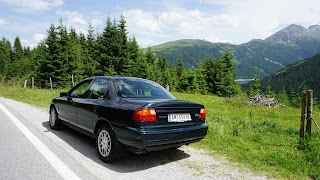 |
| Photo by Benjamin Scheidl on Unsplash |
As AG Campos Sánchez-Bordona also agrees here with, using Art. 3(1) PLD that is considering Ford Italia as an 'apparent producer' instead of Art. 3(3) PLD, which only allows to hold the supplier liable if they did not timely identify the producer, is what the CJEU should consider here. The referred question asks then whether if the supplier has not physically placed its own name, trader mark or other distinguishing feature on the consumer product, they could be held liable as a producer on the ground that they share in whole or in part the same name, trader mark or other distinguishing feature as the producer. How broad then is the concept of an 'apparent producer'?
AG Campos Sánchez-Bordona advises the CJEU to consider that in the given case not only the producer and the supplier share the same name (which allows the supplier, Ford Italia, to raise consumer confidence, taking advantage of the reputation of Ford brand - para 39) , but that they also belong to the same group of companies, operating under the same emblem (para 50), and that the car bears the trade mark the characterises both companies. As such, the consumer could have considered Ford Italia as presenting itself as a producer, which could lead to their liability under the PLD. '(...) the consumer cannot be expected to discover, by his or her own means, who the (actual) producer is, where that producer is distinct from the supplier which presents itself with those characteristics." (para 41). This according to AG Campos Sánchez-Bordona could lead to to joint and several liability of actual producer and apparent producer (para 48).
The AG Campos Sánchez-Bordona draws parallels to the recent Fennia v Philips case (C-264/21 - with our comment), however, in that case both Saeco and Phillips names were placed on the consumer product, which made the reference to the 'apparent producer' easier. The second invoked case, O'Byrne (C-127/04), made it easier to consider as a producer another company, a distributor, belonging to the same company group. However, there, the distinction with the current case was that in O'Byrne the actual producer could no longer have been sued, due to the time limits having passed.
As AG Campos Sánchez-Bordona mentions in para 31 the given case requires careful weighing of the consumer protection interests, which the broader interpretation of the notion provides, against interests of traders involved in the production and supply chain.
I am not fully convinced whether in the current case the latter should not have prevailed. Considering that the supplier, Ford Italia, promptly identified the actual producer, it seems that the consumer interests could have been protected by national procedural laws allowing either adding to the procedure another party (Ford WAG) or raising a new claim against them. However, holding the supplier liable as an apparent producer under the circumstances of this case may expose suppliers to claims they have not accounted for either by insurance or in their B2B agreements within the production and supply chain. Let's see what the CJEU decides in this case.